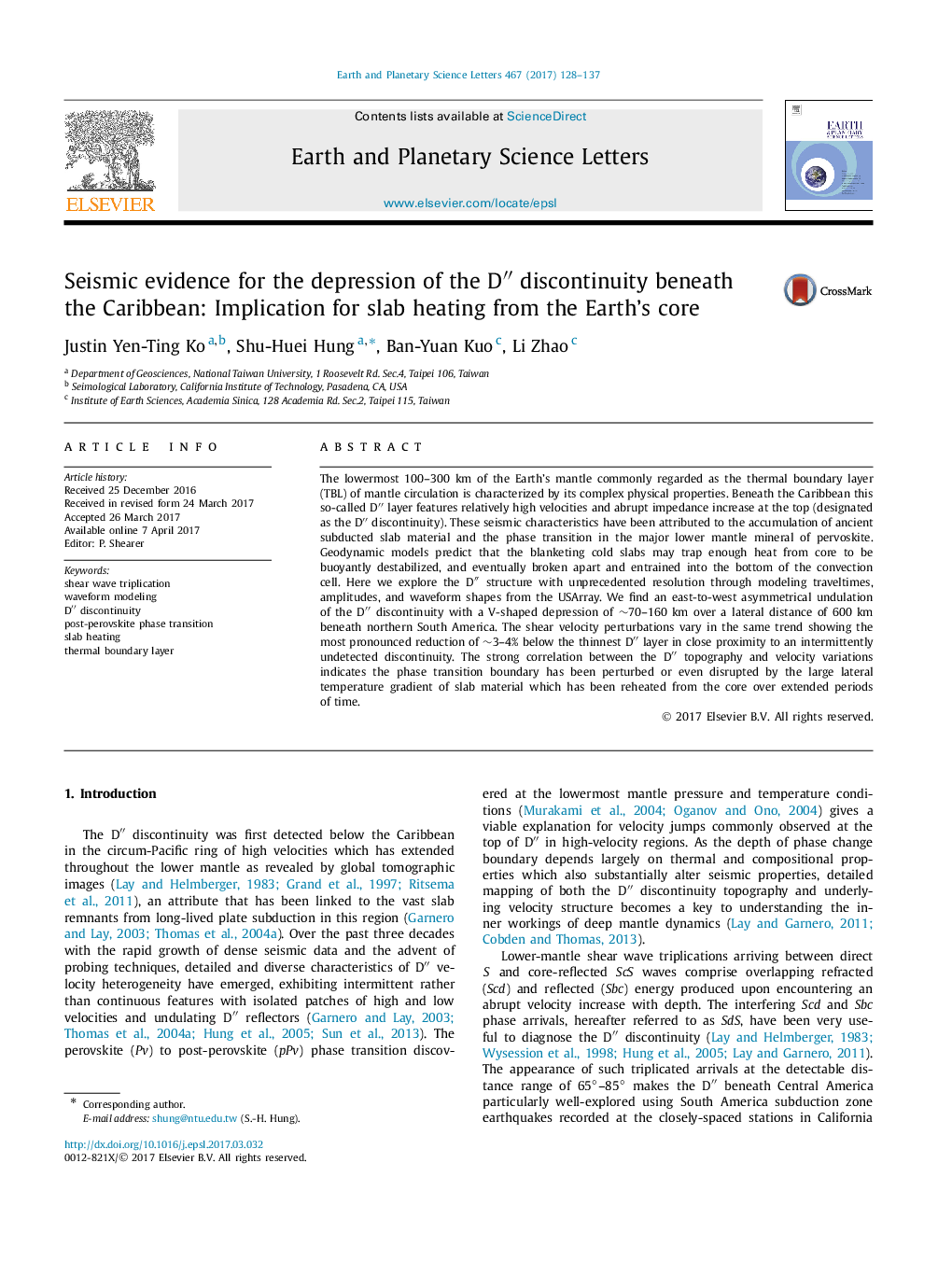| کد مقاله | کد نشریه | سال انتشار | مقاله انگلیسی | نسخه تمام متن |
|---|---|---|---|---|
| 5779946 | 1634689 | 2017 | 10 صفحه PDF | دانلود رایگان |

- The Dâ³ discontinuity shows an E-W, V-shaped undulation under northern S. America.
- The largest reduction in shear wave velocity occurs below the thinnest Dâ³ layer.
- The Dâ³ topography and underlying shear velocity variation are strongly correlated.
- Subducted slab is heated from below by the core and trapped hot mantle material.
- Thermal modulation of the phase boundary causes the undulating Dâ³ discontinuity.
The lowermost 100-300 km of the Earth's mantle commonly regarded as the thermal boundary layer (TBL) of mantle circulation is characterized by its complex physical properties. Beneath the Caribbean this so-called Dâ³ layer features relatively high velocities and abrupt impedance increase at the top (designated as the Dâ³ discontinuity). These seismic characteristics have been attributed to the accumulation of ancient subducted slab material and the phase transition in the major lower mantle mineral of pervoskite. Geodynamic models predict that the blanketing cold slabs may trap enough heat from core to be buoyantly destabilized, and eventually broken apart and entrained into the bottom of the convection cell. Here we explore the Dâ³ structure with unprecedented resolution through modeling traveltimes, amplitudes, and waveform shapes from the USArray. We find an east-to-west asymmetrical undulation of the Dâ³ discontinuity with a V-shaped depression of â¼70-160 km over a lateral distance of 600 km beneath northern South America. The shear velocity perturbations vary in the same trend showing the most pronounced reduction of â¼3-4% below the thinnest Dâ³ layer in close proximity to an intermittently undetected discontinuity. The strong correlation between the Dâ³ topography and velocity variations indicates the phase transition boundary has been perturbed or even disrupted by the large lateral temperature gradient of slab material which has been reheated from the core over extended periods of time.
Journal: Earth and Planetary Science Letters - Volume 467, 1 June 2017, Pages 128-137